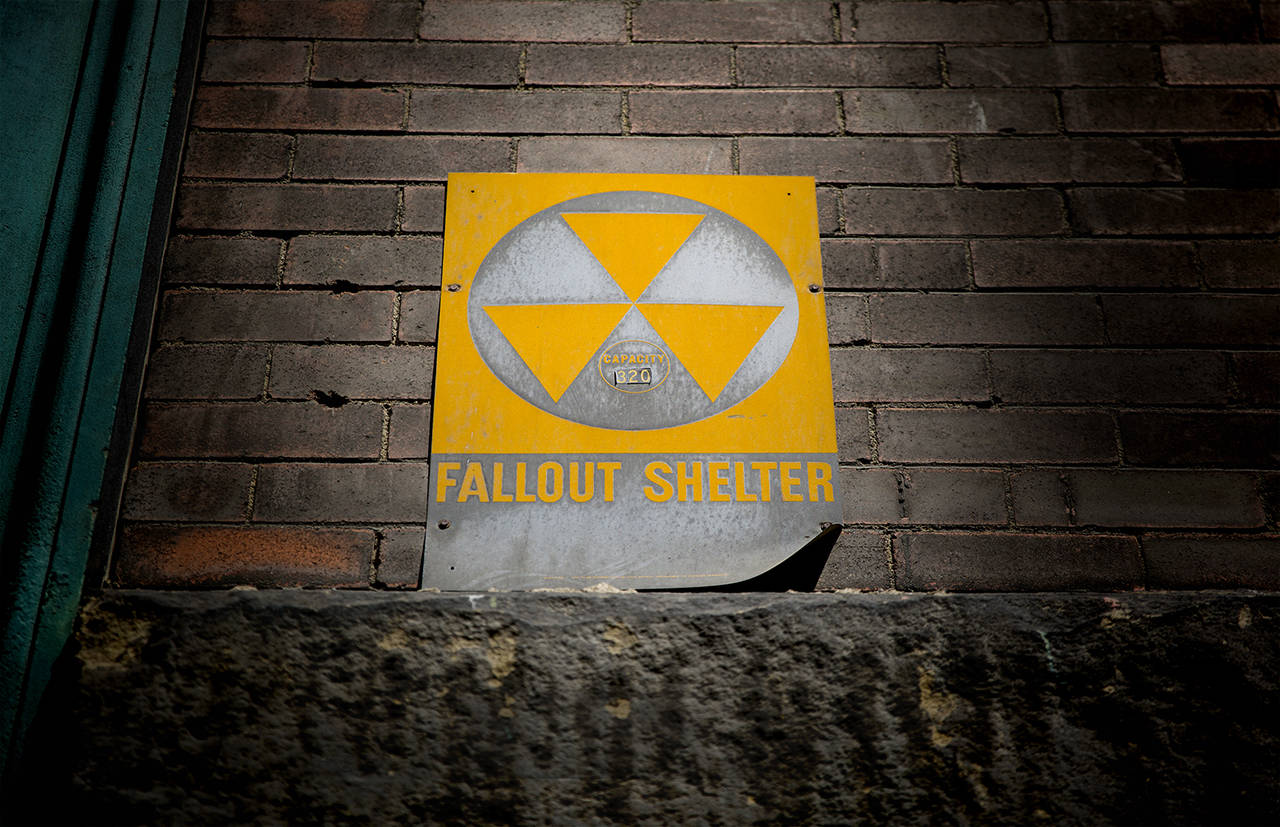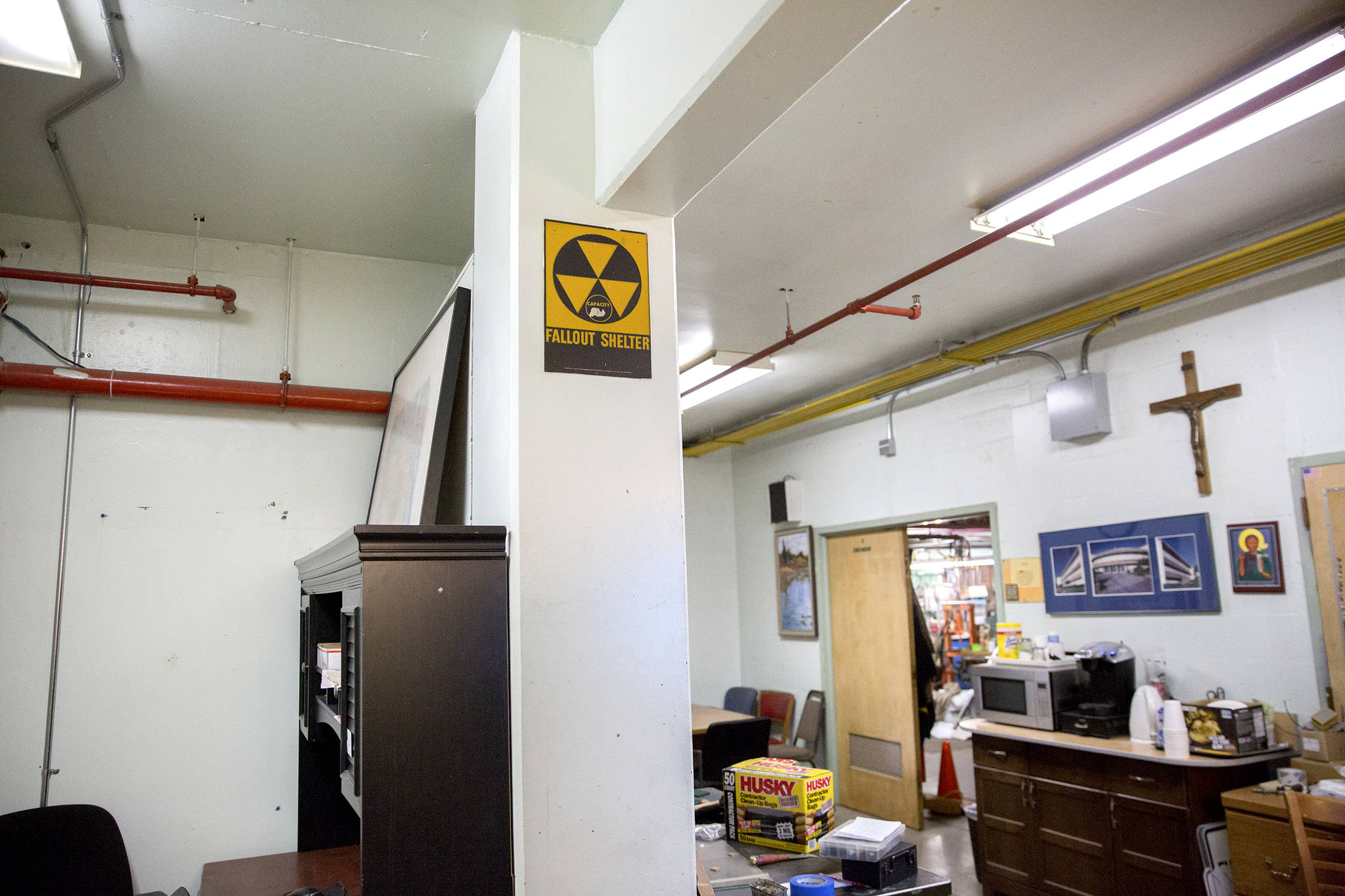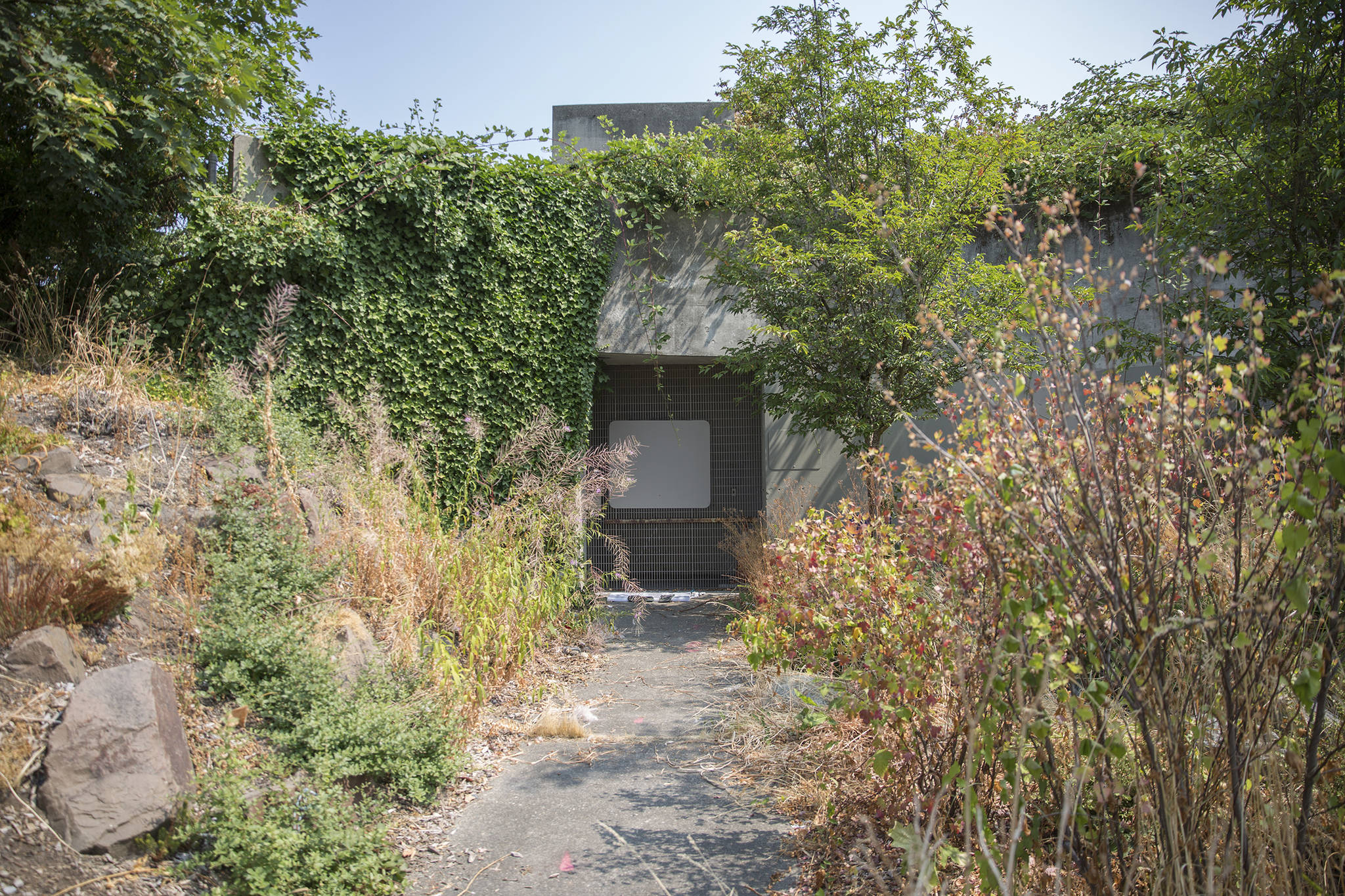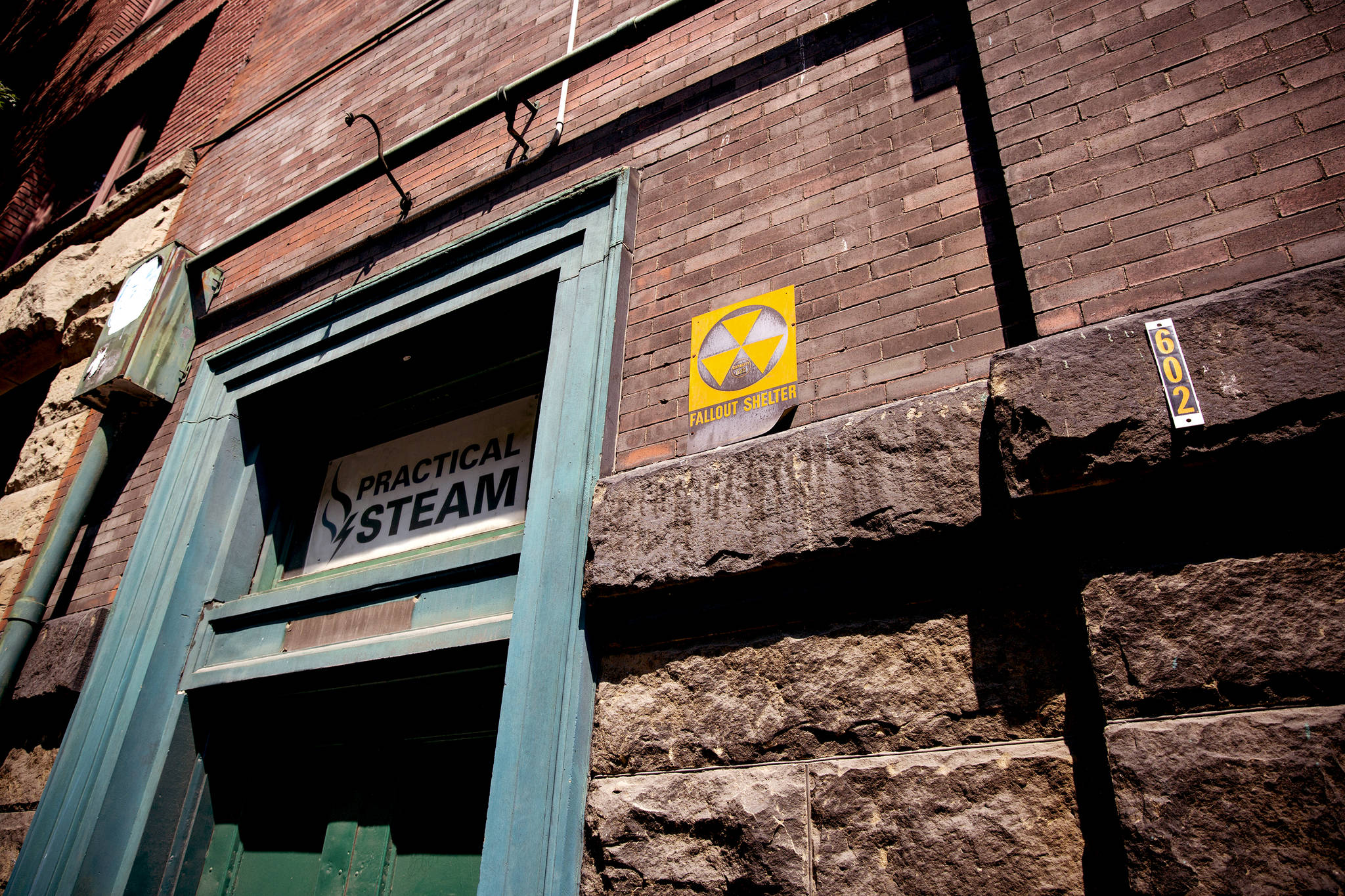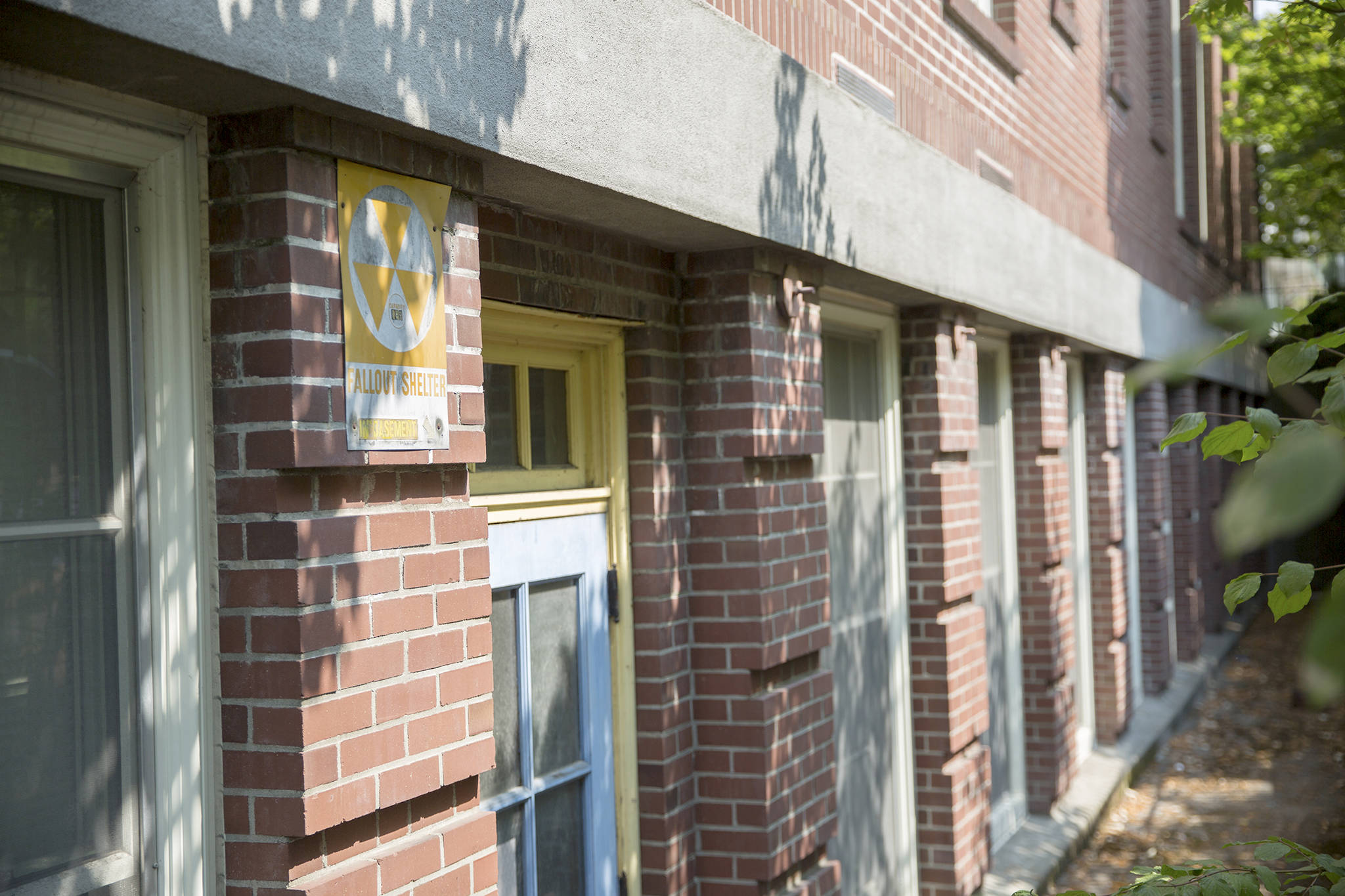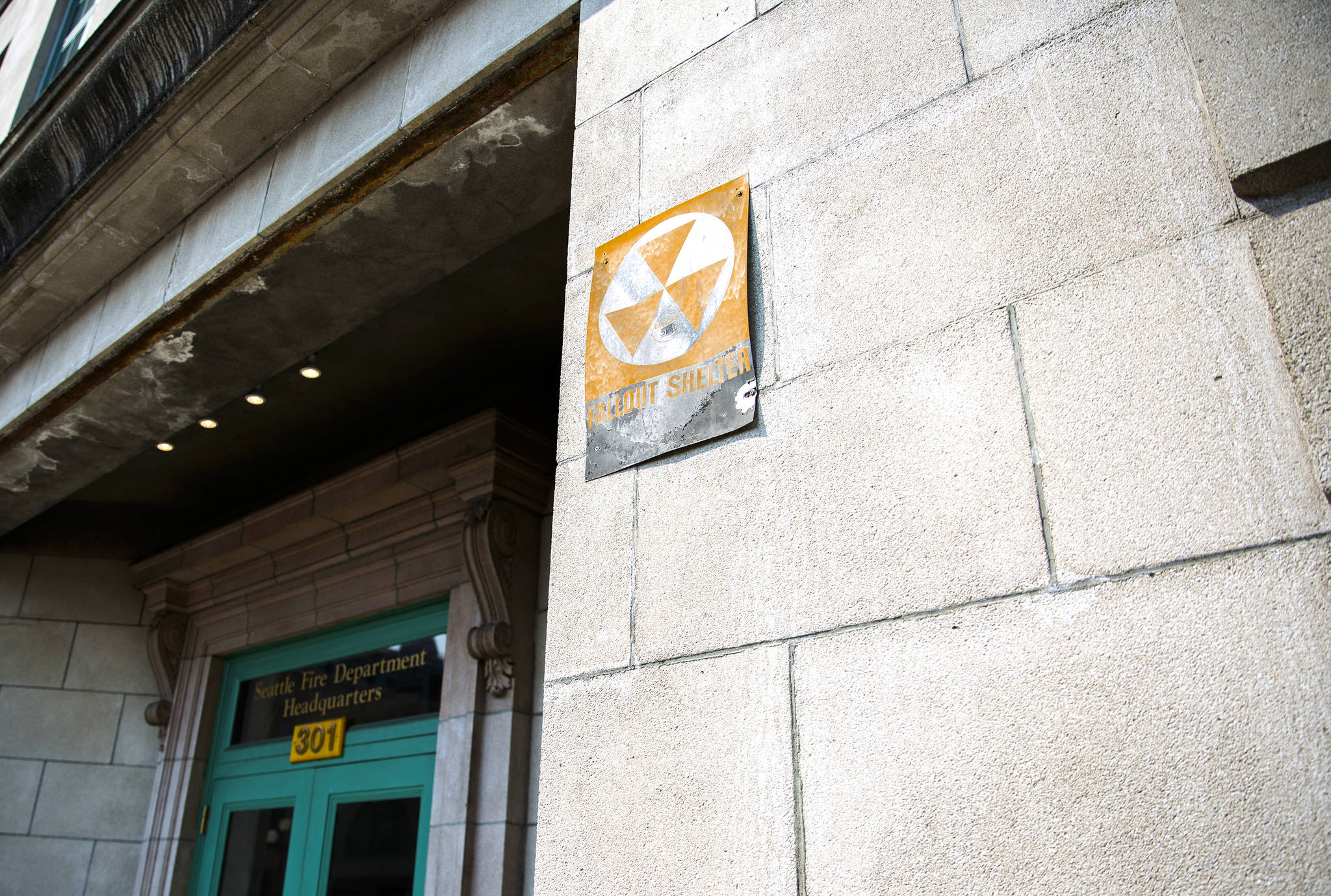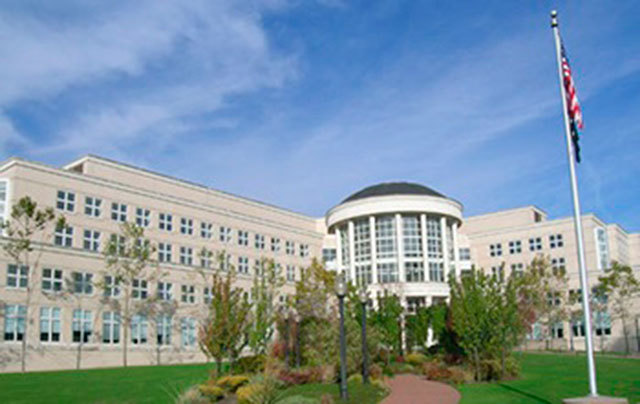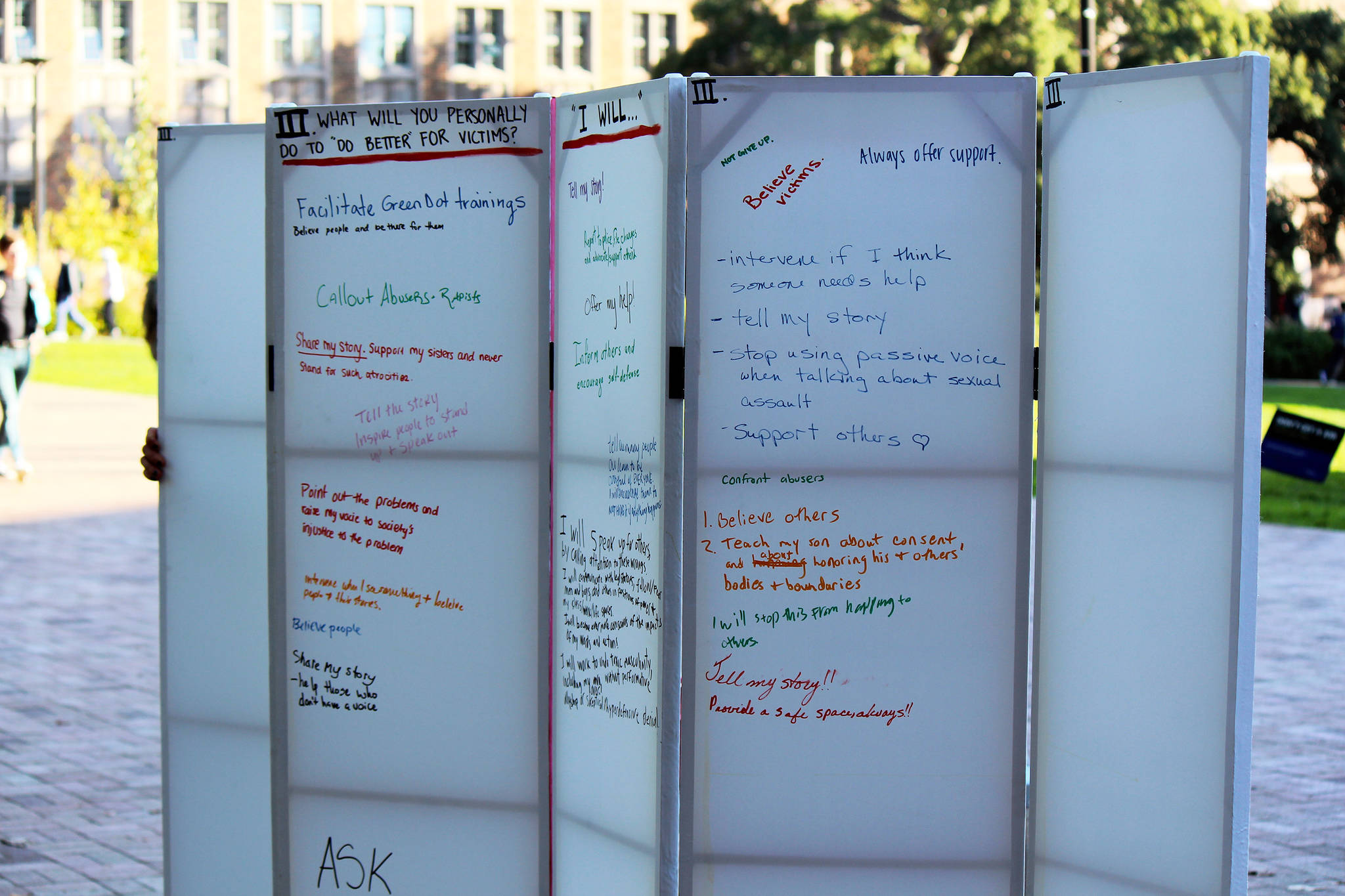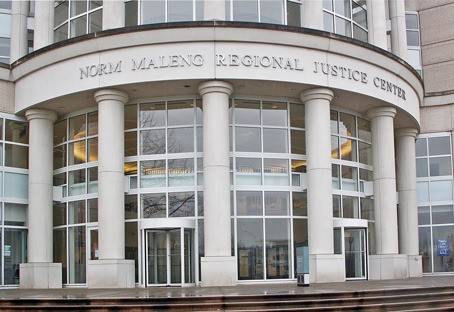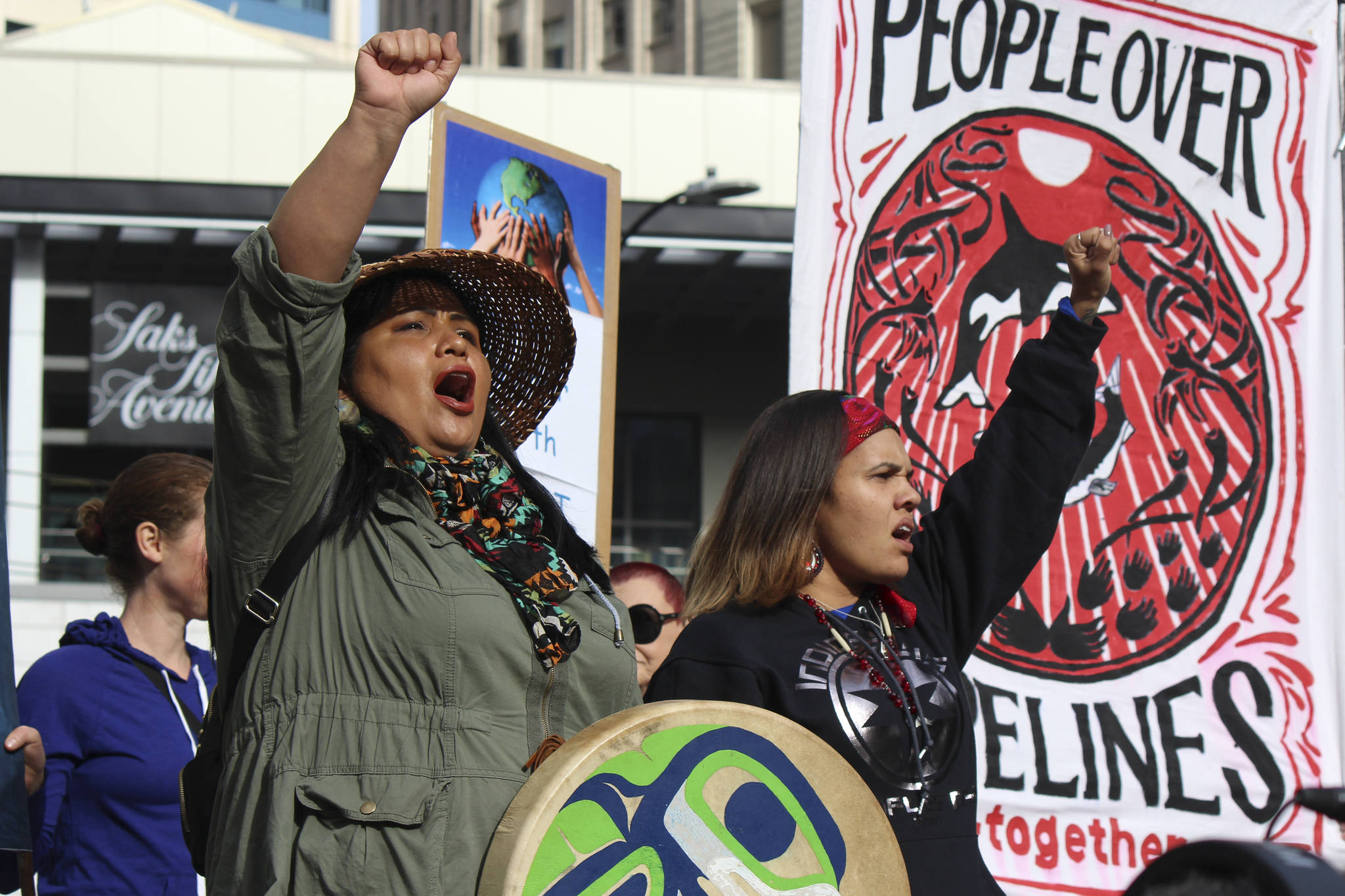In the 1950s and early 1960s, the prospect of a nuclear bomb engulfing Puget Sound was so real that local government agencies hosted build-your-own-bomb-shelter tutorials at shopping centers. They handed out illustrated pamphlets with titles like “EVACUATE: DON’T SIT UNDER THE MUSHROOM” and described plans to get as many people as possible out of the city and into the Cascades in the event of an attack. In 1954 in Seattle, you could buy, for just shy of $500—approximately $4,500 in today’s dollars—a “Deluxe Scintillator”: a handheld uranium-radiation detector that came in a smart leather bag for easy storage in your car or home. Kids performed “duck and cover” drills in schools on a regular basis, and Seattle’s Parent Teacher Association received nationwide attention for producing ID bracelets for kids, so that they could be identified and returned to their families post-explosion.
It was everywhere. “You would go to the shopping center or the grocery store or the county fair, and you would find out how to protect yourself in case of a nuclear bomb,” says Leonard Garfield, executive director of Seattle’s Museum of History and Industry.
In 1960, Boeing, then by far Seattle’s largest employer as well as a major industrial supplier for the military, “mailed booklets to every one of its employees with instructions on how to prepare for nuclear war,” Garfield adds. Boeing’s main advice to its workers was that they all build emergency fallout shelters for their families—thick-walled underground lairs stocked with supplies and designed to house people for weeks as waves of toxic radiation scorched the landscape. In the Eastside suburbs, largely being built at the time for Boeing employees, “you could buy a new home with a fallout shelter,” says Dr. Lorraine McConaghy, historian emerita at MOHAI. “The model home had a fallout shelter in it.”
By the late 1950s, Seattle and King County had established their own “Civil Defense” departments with the express purpose of protecting the local citizenry from nuclear attack, and went around town identifying existing basements as public fallout shelters. They fortified them with food and water and “sanitation kits”; on display now at MOHAI are a couple of square metal containers from the era labeled, apocalyptically, “SURVIVAL CRACKERS.” The shelters, usually in the basements of schools, churches, or other large public buildings, bore on their exteriors orange and black signs with the iconic nuclear symbol and the words: FALLOUT SHELTER.
According to one account on the HistoryLink website, there were 867 such shelters in Seattle during the Cold War era, though several local historians can’t confirm that number. If you include the private ones in people’s basements, the total number of fallout shelters is likely far higher, and “extremely difficult to be precise about,” says McConaghy. One of the largest, and what is believed to be the only one built from scratch within Seattle city limits, was a federally financed bunker under I-5 in Ravenna. Officials broke ground to much fanfare on May 15, 1962, and the shelter was completed the following spring, painted institutional green, and filled with everything from collapsible metal bunks to a radioactive-particulate-filtering ventilation system. It was designed as a national prototype; at the time, the U.S. Bureau of Public Roads “intended to have fallout shelters every few miles along all the highways,” says Craig Holstine, a Washington State Department of Transportation historian who has researched the topic extensively, as refuge for “anyone who happened to find him or herself without shelter during a nuclear attack.”
But that idea never materialized. As far as Holstine knows, “no other shelters were ever built, here or anywhere else, under highways in the U.S. or the world.” The rather creepy, timeworn bunker is now blanketed in ivy and packed so tightly with extraneous office furniture from the WSDOT Tolling Division, Holstine says, that “there’s virtually no entry into the main room.”
It’s been decades, and the Cold War has come and gone. But suddenly the fear of nuclear annihilation seems poised to hurtle right back. Anxiety spiked particularly when President Donald Trump promised “fire and fury” in response to threats from North Korea, which has been showing off an accelerated nuclear program. North Korea released an official statement on Saturday taunting Trump that its military is “capable of fighting any war the U.S. wants” and is “now on the standby to launch fire into its mainland.” No fire and fury yet, but the nervous jokes persist on social media: “So, is there an app for finding the nearest fallout shelter, or . . . ?”
If you were planning to hole up in one of Seattle’s old public fallout shelters, though, good luck: It’s hard to even find them anymore. And they may not have ensured survival, even when they were stocked with tins of survival crackers. In the ’50s and ’60s, “we didn’t know as much about radiation and the effects of radiation as we do now,” says Garfield. “A lot of those measures were probably ineffective.”
Yet the Seattle area, with its sitting-duck location on the Pacific Rim—and, more important, as the home of Boeing and, in nearby Bremerton, the largest concentration of nuclear warheads anywhere in the country, among other defense assets—was uniquely prepared for this kind of thing. Seattle was “a little bit distinctive because it was a strategic target” both during and after World War II, says Bruce Hevly, an associate professor of history at the University of Washington. Plus, Seattle essentially built its Boeing-fueled economy on Cold War tensions, Garfield points out; as a result, “there was a lot of self-awareness here that went beyond the normal precaution that other communities took.”
Nuclear-war preparedness was so commonplace at the time that Garfield says he certainly remembers when FALLOUT SHELTER signs peppered the landscape; and Hevly, who grew up in Seattle, remembers that his childhood church, University Presbyterian Church in the U District, once hosted a shelter. “Like a lot of public buildings, it was signed with a Civil Defense sign,” Hevly says, and stocked with big barrels of food and water. “It was in the passage that led down to the choir room,” he recalls. “When you went to choir practice, you went by all those barrels.”
Historians note that there was probably no formal decommission date for any of these shelters, but surmise that fears began to abate following the Cuban Missile Crisis in 1962, thought to be the closest the world ever came to full-on nuclear conflagration. By the 1970s, the I-5 shelter was being used for WSDOT record-keeping, and the food and water stored in basements had likely long expired. McConaghy says some basement shelters she toured in the 1990s were being used as wine cellars or for storing Christmas ornaments.
In terms of nuclear-war-prevention theories, too, the shelters became controversial: Fortifying ourselves for nuclear attack is perhaps not only futile, but a way “to send a signal to the other side that you have the capability to resist their attack,” Hevly says.
In 1982, then-Seattle mayor Charles Royer put his foot down. Plans to evacuate Seattle to east of the Cascades were “virtually useless,” he said, and “lend credence to the dangerous idea that a nuclear war is a manageable emergency.” That theory was cemented into state law in 1983. As a result, to this day, Washington state can’t legally prepare its residents for nuclear attack. Sen. Mark Miloscia (R-Federal Way) co-sponsored a bill introduced this past legislative session that would have changed the law. It never left committee.
“We’re much more sort of libertarian and less communitarian now,” says Hevly, noting that, certainly, both then and now, “There’s this culture of folks who are getting ready for something,” whether it’s nuclear disaster or another kind of apocalypse. But, often, “they’re doing it for themselves. There’s not that much communal thinking about this anymore.”
